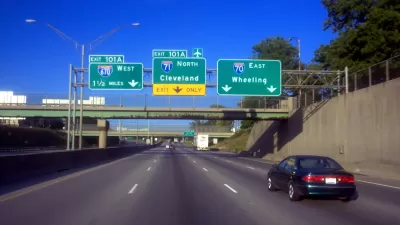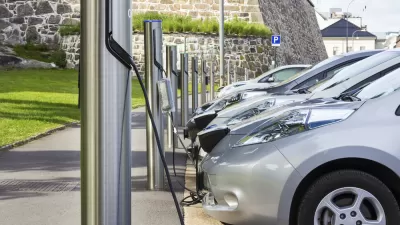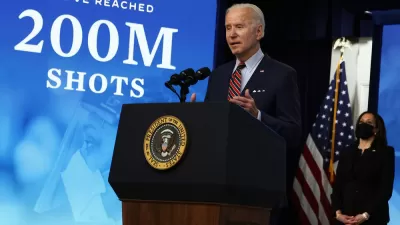To some, the agreement promises too much funding for traditional infrastructure programs rather than 'adaptations and innovations.'

[Updated July 20, 2021.]
Strong Towns' Charles Marohn argues that the proposals of the Bipartisan Infrastructure Framework will "make our infrastructure crisis worse." According to Marohn, "[s]hoveling unprecedented levels of funding into current programs prior to any serious work on reform is a terrible idea, regardless of who proposes it."
Assessing the funding outlined in the bipartisan compromise, Marohn writes:
While $5 million for active transportation sounds nice, you’ll find $4.2 billion for trunk highways in the bill. If the $5 million for Safe Routes for School gets you excited, perhaps you won’t mind the $1.7 billion for county state aid highways. That $57.5 million in bus rapid transit seems really progressive until it is compared to the $430 million being spent on municipal state aid routes (a program to essentially turn local streets into highways). Nearly half a billion dollars is going to the Department of Public Safety, with $226 million of that just for patrolling highways. We’re going to spend more in two weeks on highway patrols than we will spend in two years in the active transportation account.
Marohn proposes that "[o]ur top-down infrastructure programs need to shift to support maintenance, not expansion, and make room for the bottom-up adaptations and innovations needed to drive gains in productivity." Moreover: "[w]e should not be cheering on a bi-partisan consensus based on some simulacrum of reform while an overwhelming amount of spending is going to programs that are making us weaker as a country, as cities, and as neighborhoods."
FULL STORY: A Preview of Bi-Partisan Compromise on Infrastructure (Sorry, It's Not Good)

Alabama: Trump Terminates Settlements for Black Communities Harmed By Raw Sewage
Trump deemed the landmark civil rights agreement “illegal DEI and environmental justice policy.”

Planetizen Federal Action Tracker
A weekly monitor of how Trump’s orders and actions are impacting planners and planning in America.

How Atlanta Built 7,000 Housing Units in 3 Years
The city’s comprehensive, neighborhood-focused housing strategy focuses on identifying properties and land that can be repurposed for housing and encouraging development in underserved neighborhoods.

In Both Crashes and Crime, Public Transportation is Far Safer than Driving
Contrary to popular assumptions, public transportation has far lower crash and crime rates than automobile travel. For safer communities, improve and encourage transit travel.

Report: Zoning Reforms Should Complement Nashville’s Ambitious Transit Plan
Without reform, restrictive zoning codes will limit the impact of the city’s planned transit expansion and could exclude some of the residents who depend on transit the most.

Judge Orders Release of Frozen IRA, IIJA Funding
The decision is a victory for environmental groups who charged that freezing funds for critical infrastructure and disaster response programs caused “real and irreparable harm” to communities.
Urban Design for Planners 1: Software Tools
This six-course series explores essential urban design concepts using open source software and equips planners with the tools they need to participate fully in the urban design process.
Planning for Universal Design
Learn the tools for implementing Universal Design in planning regulations.
Jessamine County Fiscal Court
Caltrans
Institute for Housing and Urban Development Studies (IHS)
City of Grandview
Harvard GSD Executive Education
Toledo-Lucas County Plan Commissions
Salt Lake City
NYU Wagner Graduate School of Public Service





























